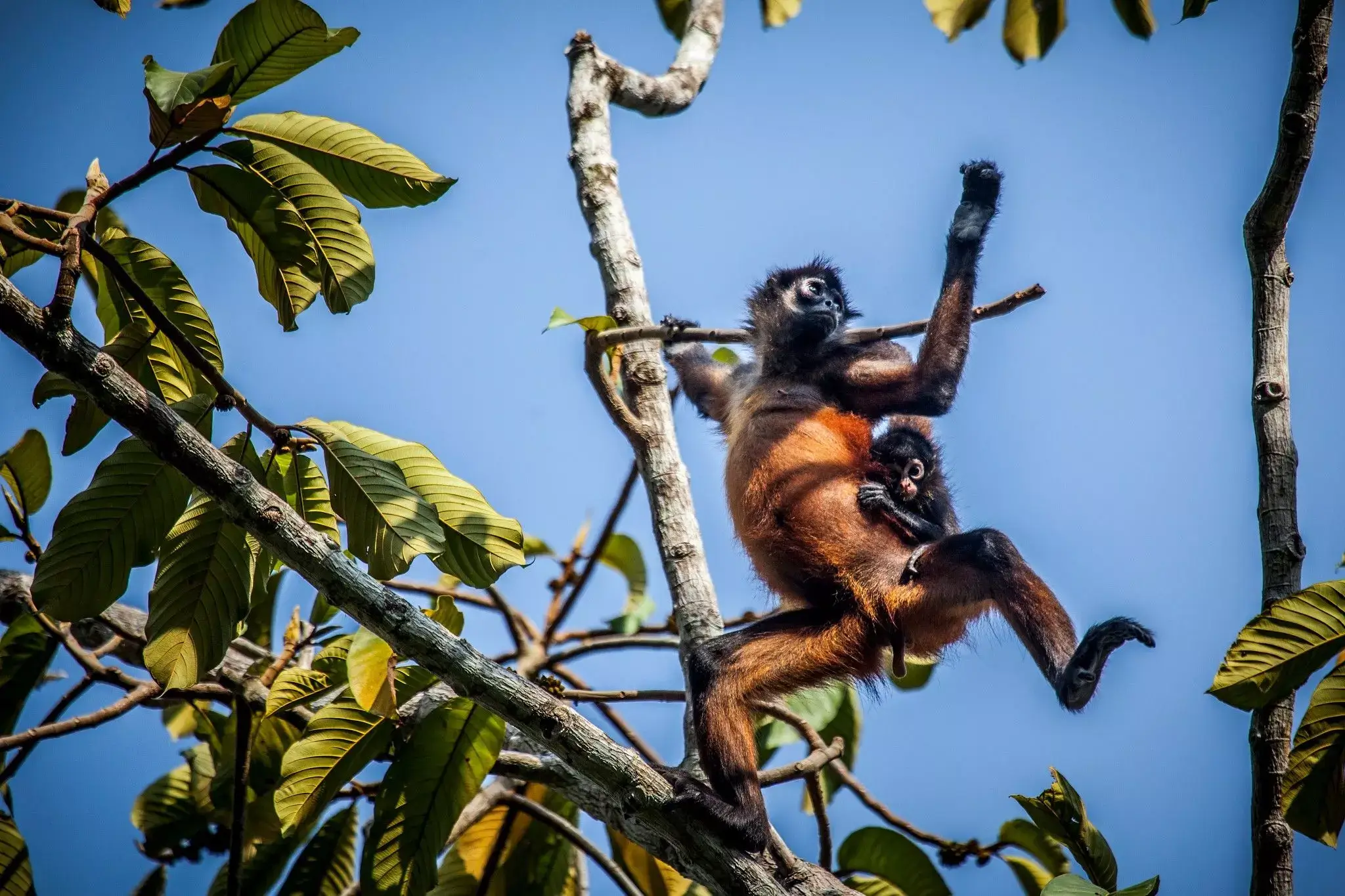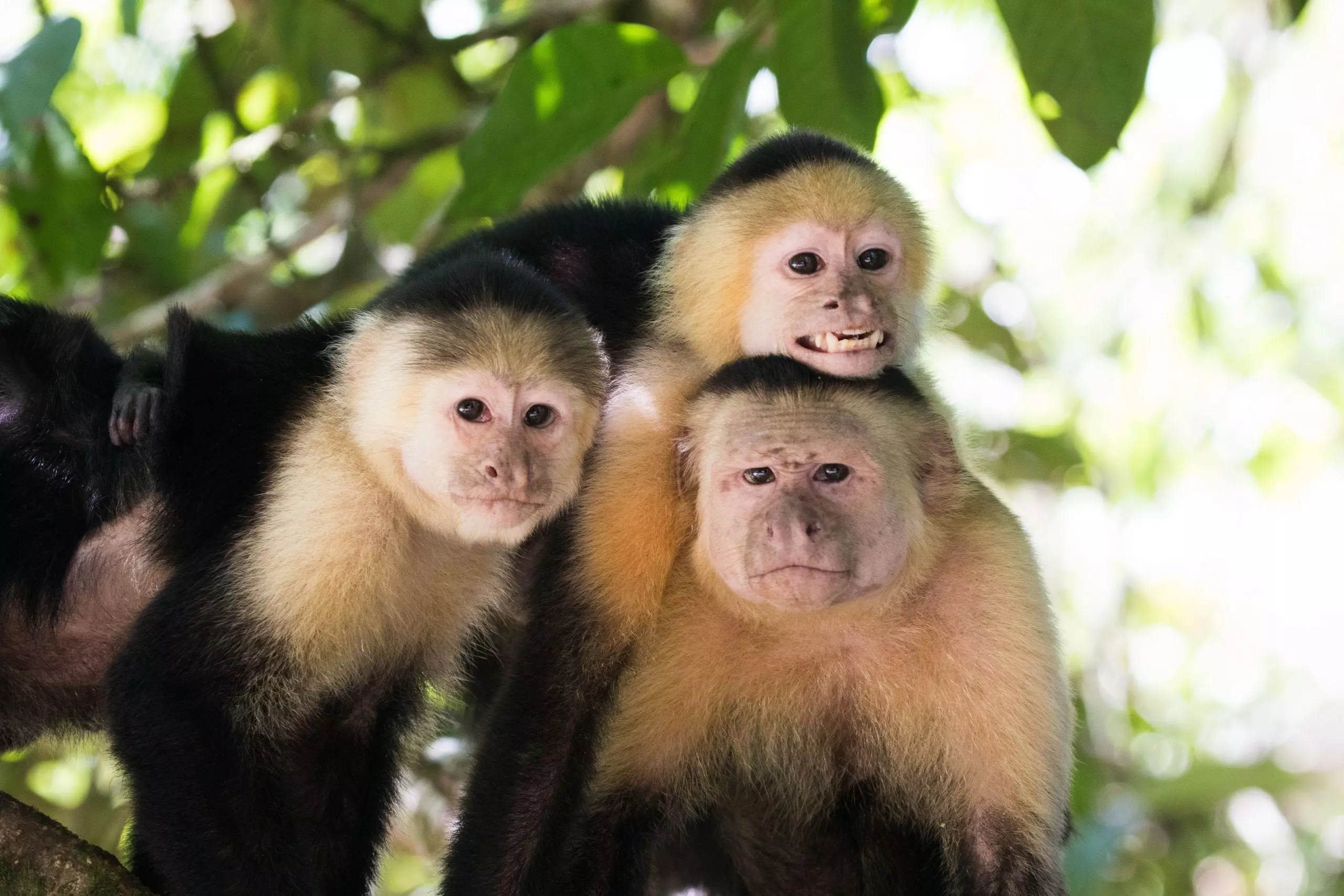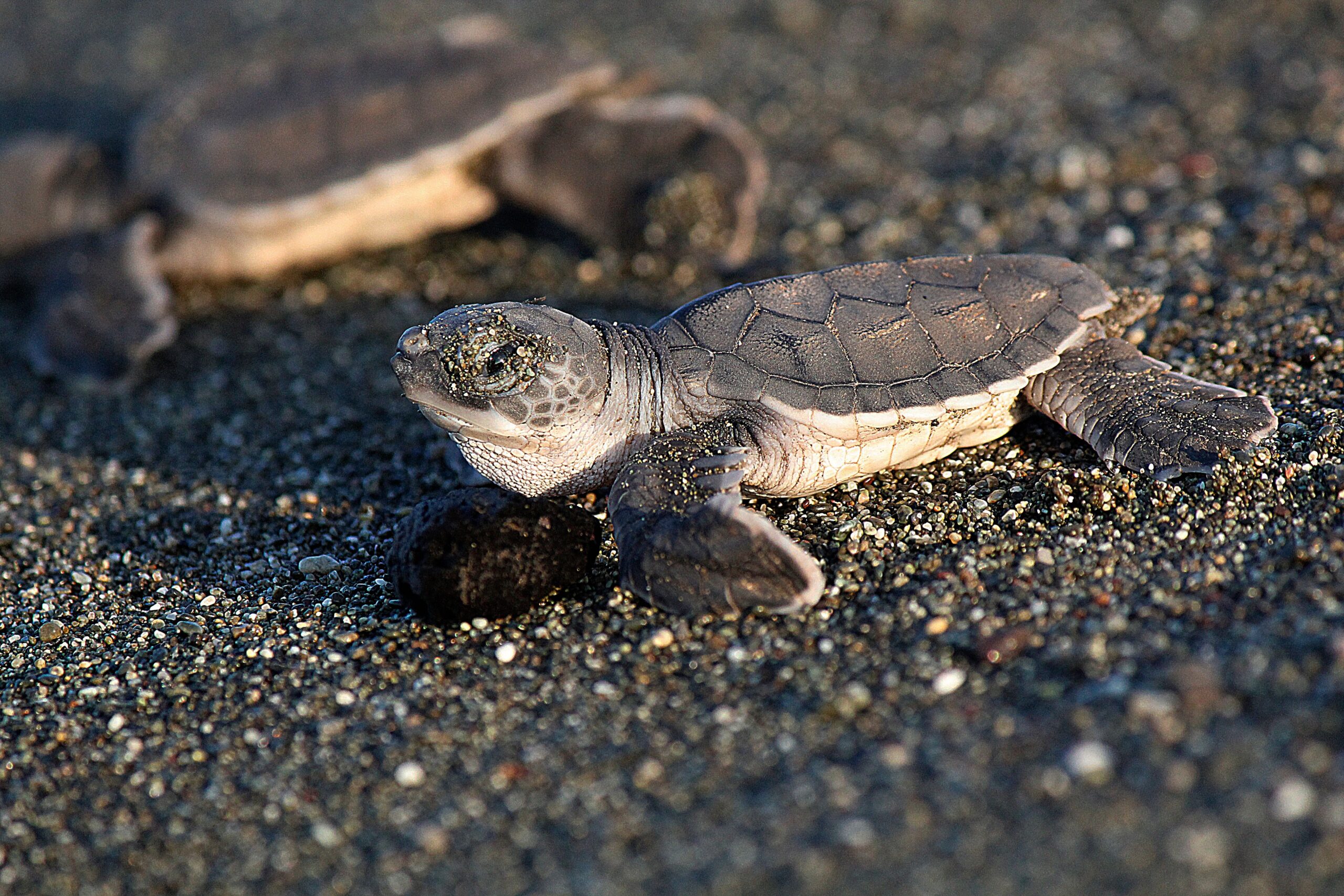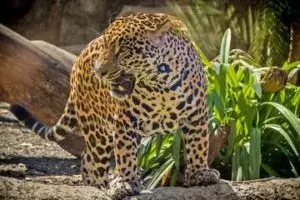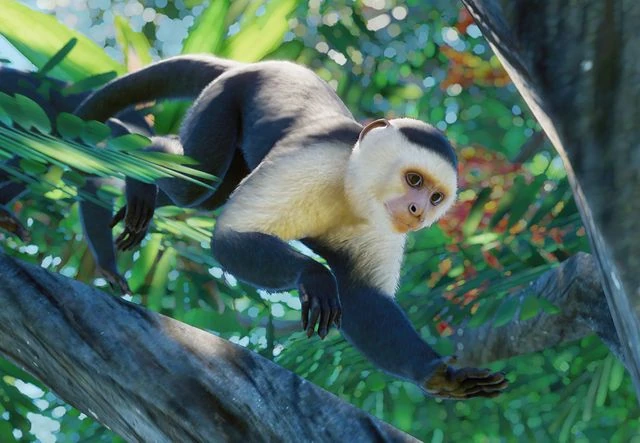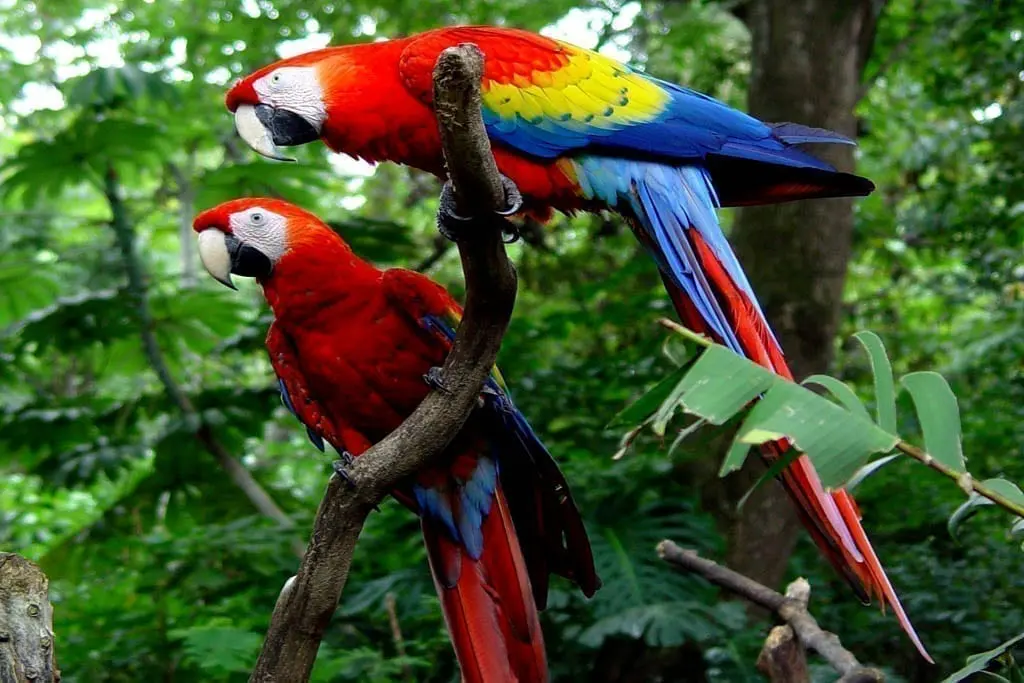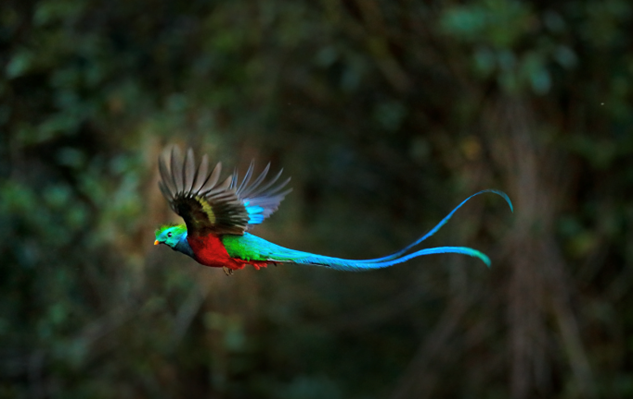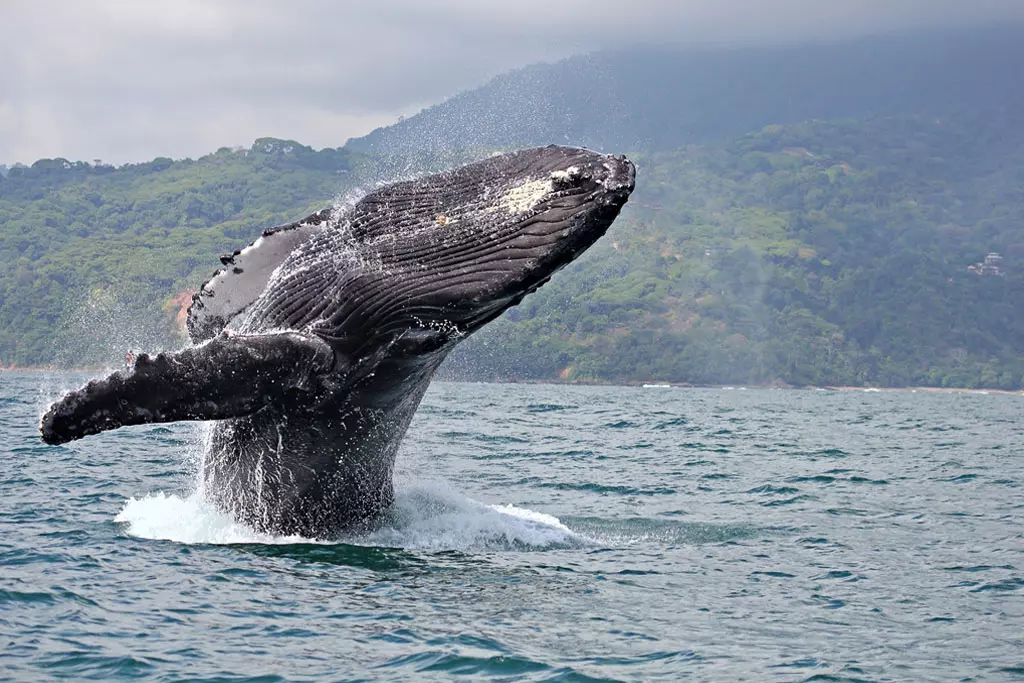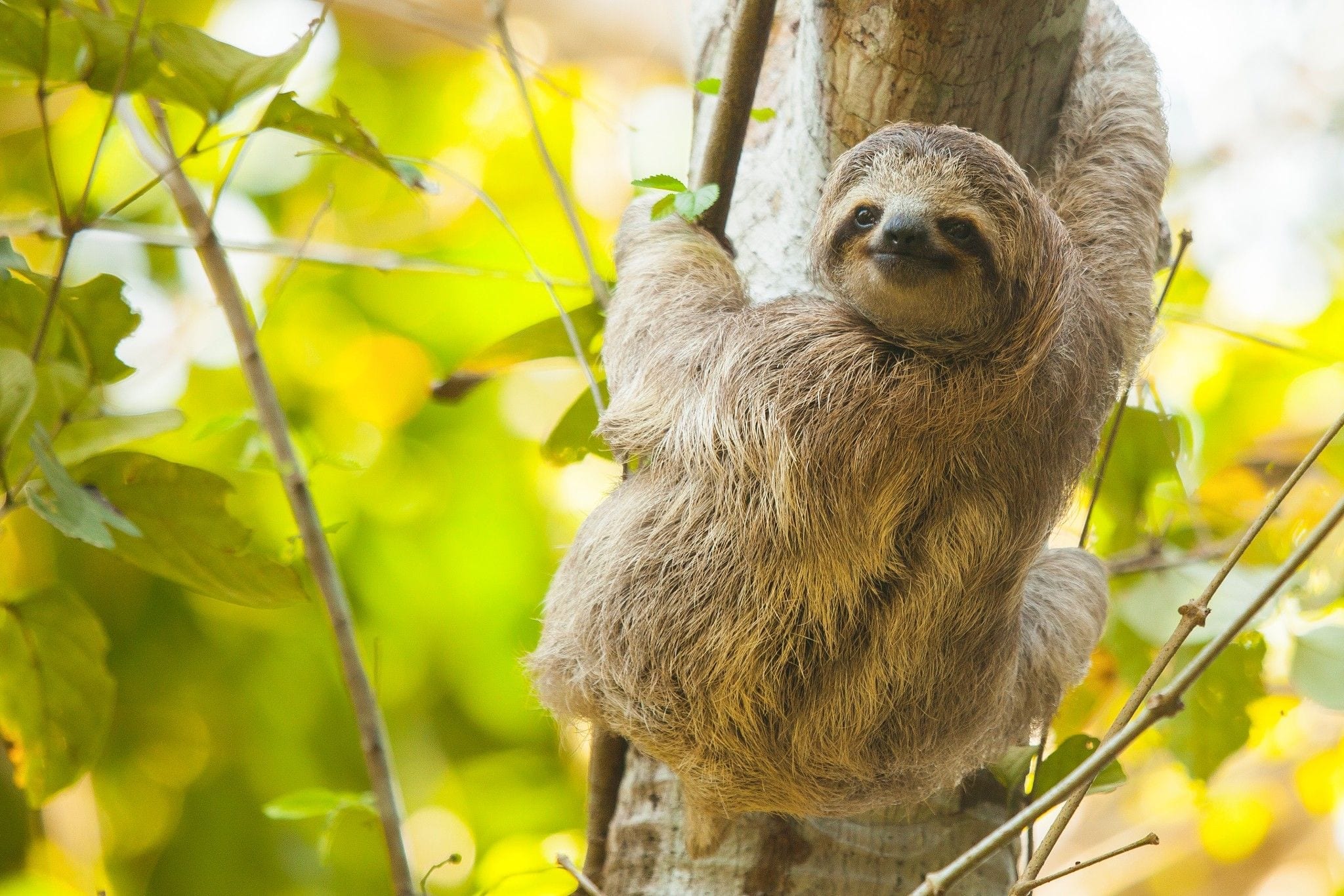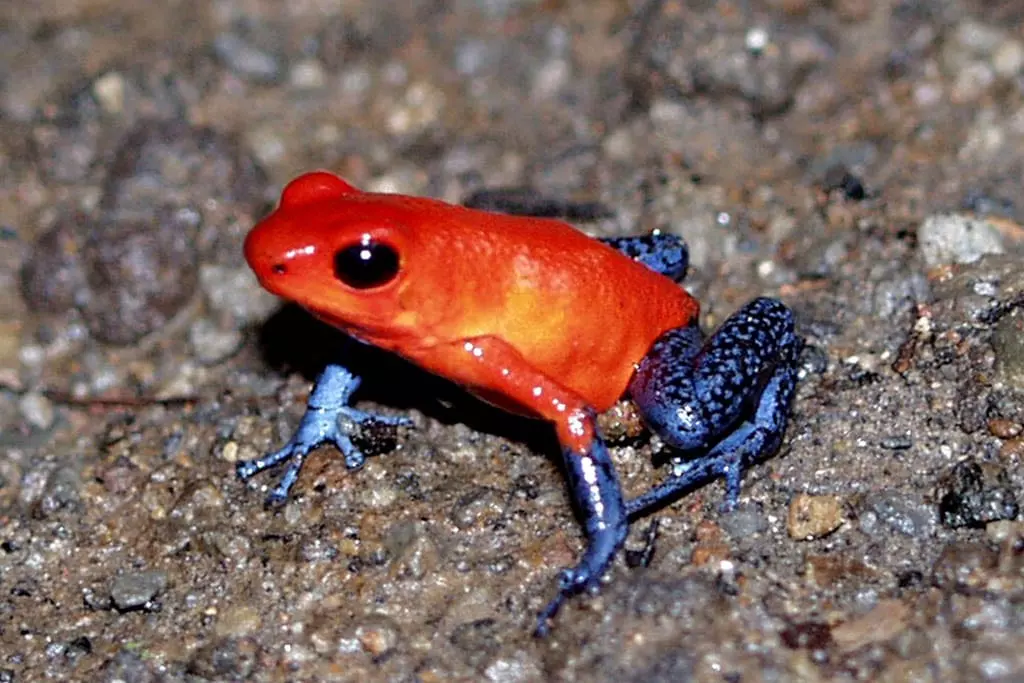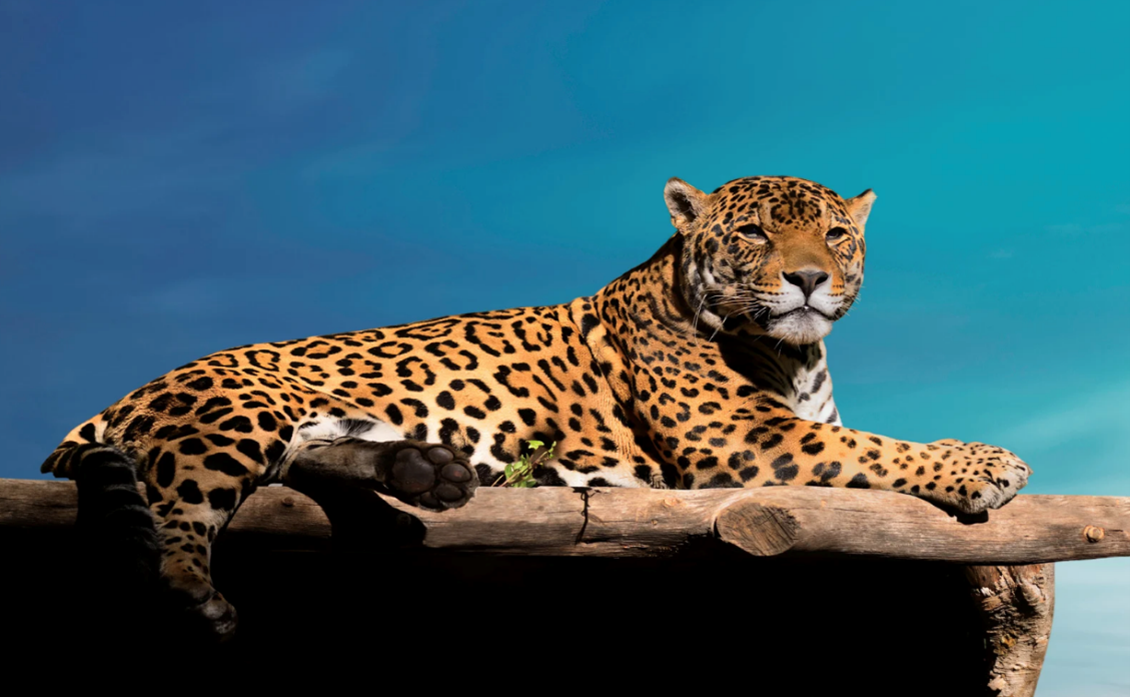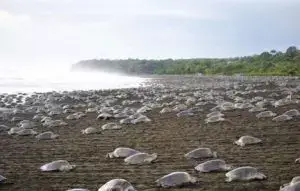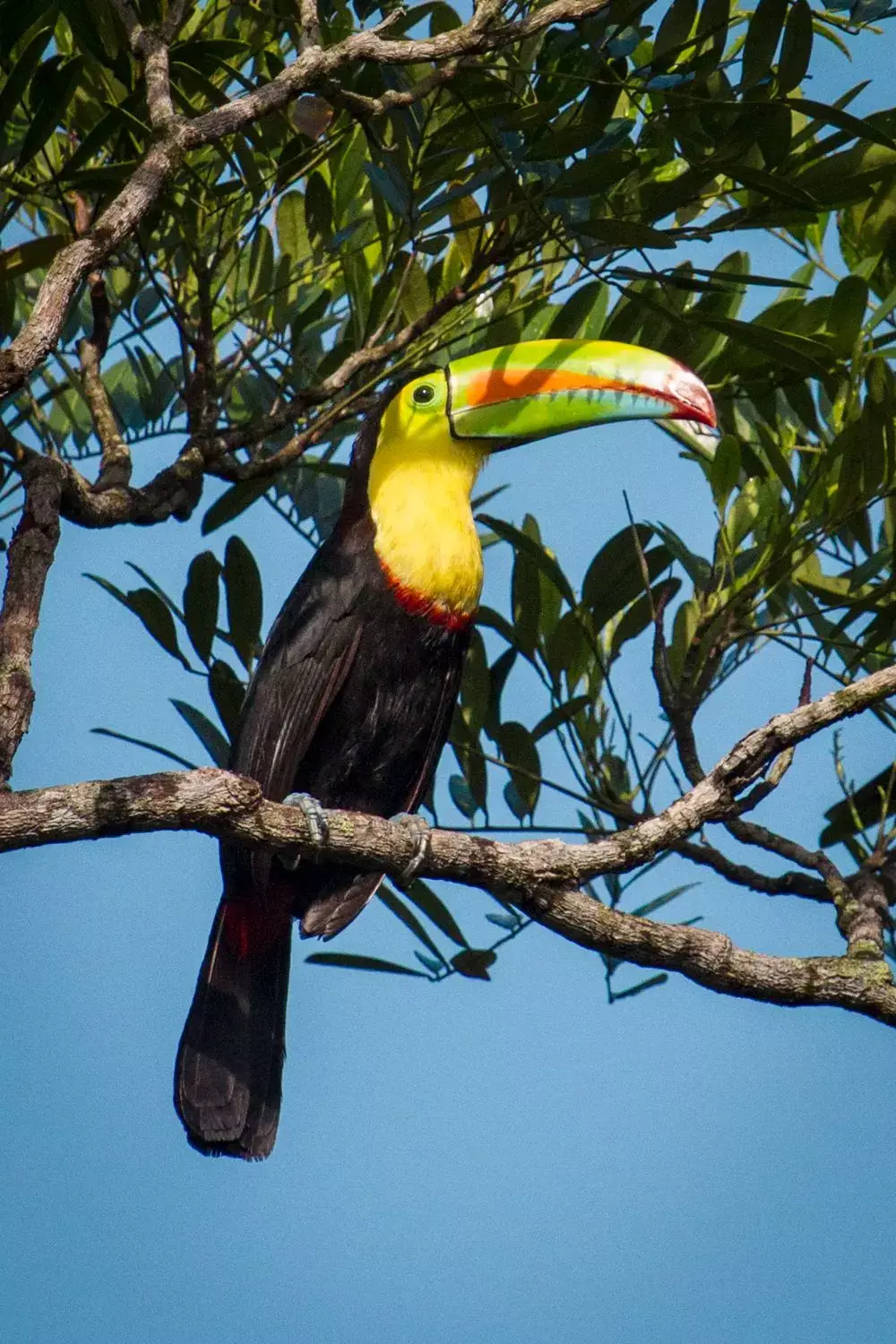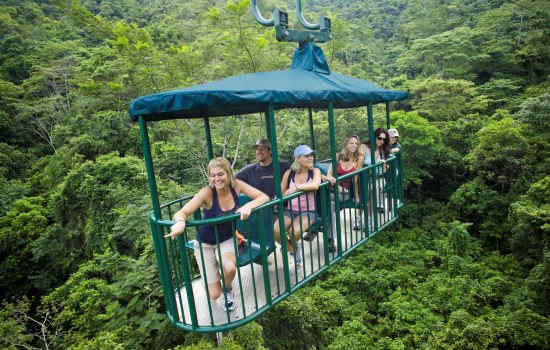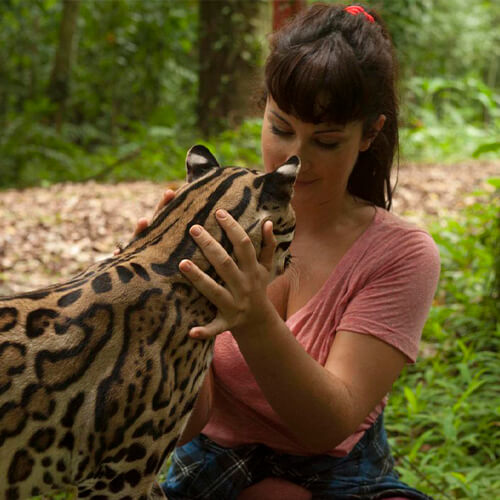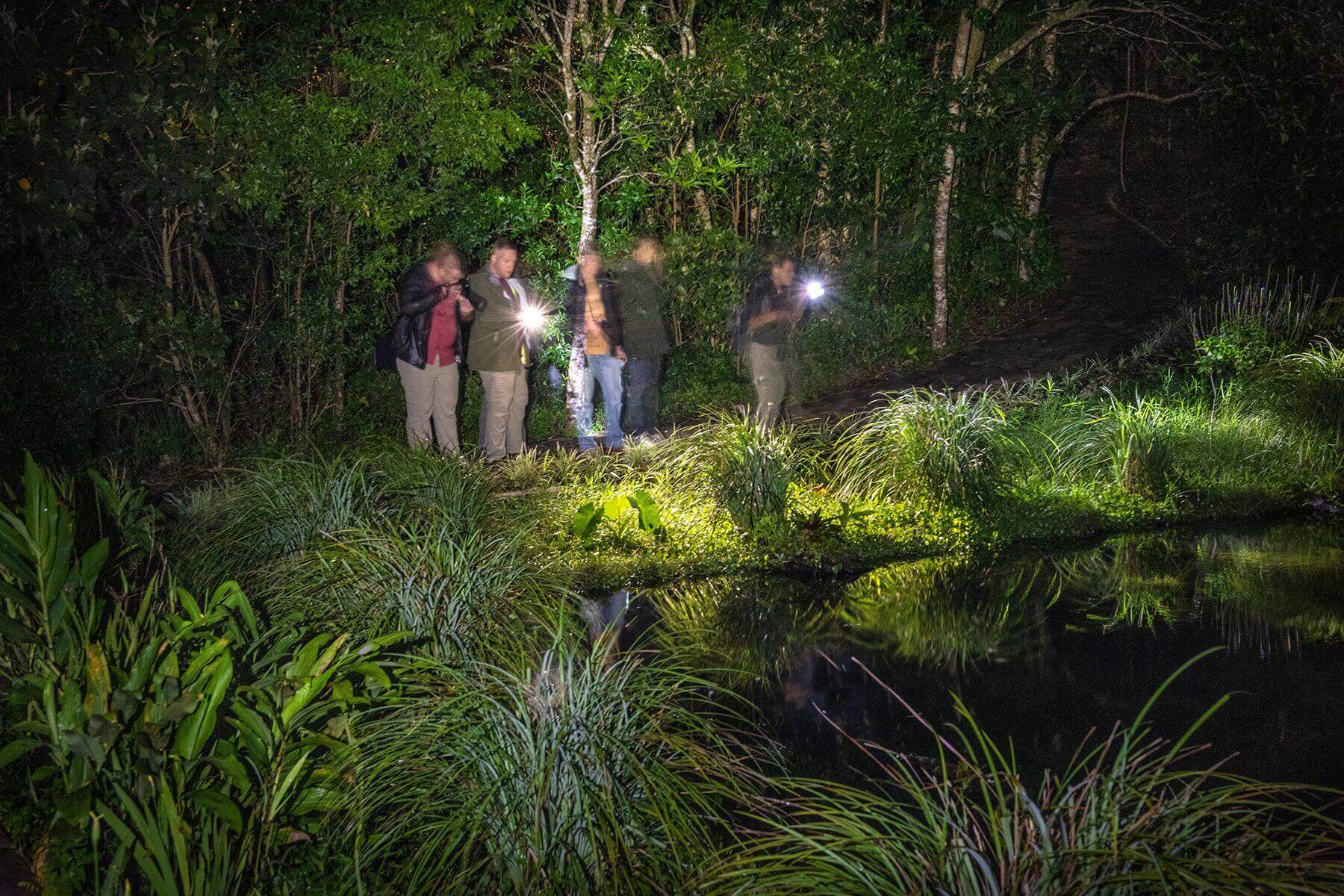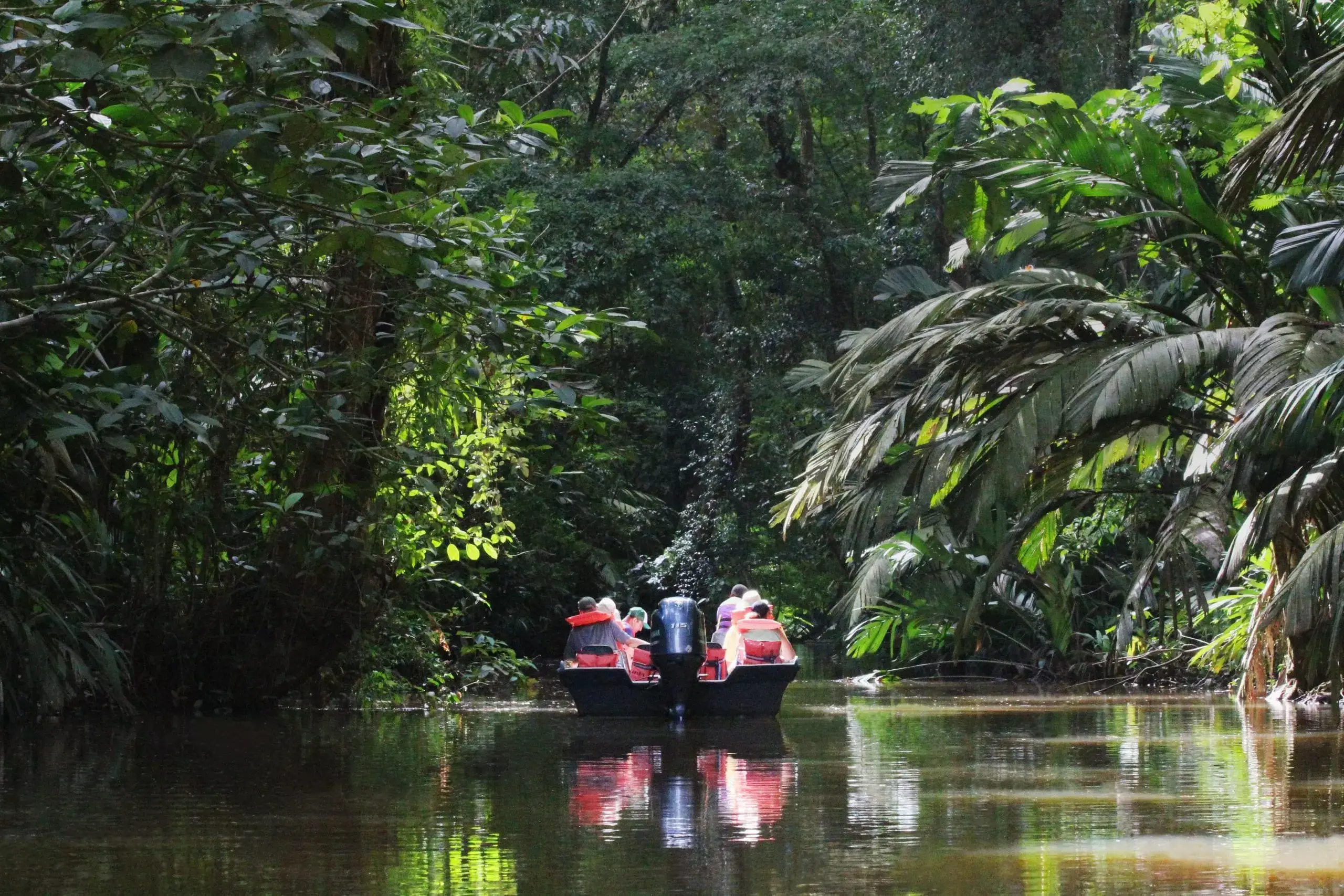Animals and Wildlife in Costa Rica
Explore the animals of Costa Rica
Costa Rica is like a living Noah’s Ark, housing an astonishing diversity of animal species. Its lush rainforests, vibrant ecosystems, and protected habitats have created a haven for wildlife to thrive. From the tiny hummingbirds, their vibrant feathers glistening in the sunlight, to the majestic jaguars, silently prowling through the dense jungles, this tropical paradise is teeming with life at every turn.
Costa Rica’s commitment to conservation and sustainable practices has created a sanctuary where wildlife can thrive. Exploring the animals of Costa Rica is not just an opportunity to witness their beauty but also a chance to appreciate the intricate web of life that exists in this biodiverse wonderland.
To get the most out of your trip, browse our Nature Vacation Packages. Every hotel, tour & transportation has been handpicked and vetted to guarantee the ultimate Costa Rican Nature Vacation
Costa Rica's Top 10 Animals
Here are Costa Rica’s top 10 animals that showcase the incredible richness of its natural heritage:
Resplendent Quetzal
With its stunning emerald green plumage and long, graceful tail feathers, the resplendent quetzal is a true symbol of Costa Rica’s wildlife. Spotting this elusive bird in the cloud forests of Monteverde or San Gerardo de Dota is a dream come true for any wildlife enthusiast.
White-faced Capuchin Monkey
These intelligent and social monkeys are known for their charismatic nature and mischievous antics. Found in various regions, such as Manuel Antonio National Park, they swing through the trees, captivating visitors with their acrobatic displays and expressive faces.
Scarlet Macaw
One of the most vibrant and iconic bird species in Costa Rica, the scarlet macaw mesmerizes with its vivid red, blue, and yellow feathers. You can spot these majestic birds soaring overhead and perched in trees of Carara National Park and other tropical regions.
Three-toed Sloth
Costa Rica is home to both two-toed and three-toed sloths, but it’s the latter that steals the spotlight. These slow-moving creatures spend their lives high up in the trees, munching on leaves and captivating observers with their adorable appearance. Encounter them in places like Manuel Antonio or Tortuguero National Park.
Green Iguana
The green iguana is a common sight in Costa Rica’s tropical landscapes. These large reptiles, with their vibrant green coloration and impressive crests, can be seen sunning themselves on branches or camouflaging among the vegetation in areas like Manuel Antonio and Tortuguero.
Humpback Whale
Costa Rica’s Pacific coast becomes a theater for the majestic humpback whales during their annual migration. These magnificent marine mammals grace the country’s waters from December to April and July to November, captivating onlookers with their breaches, tail slaps, and melodic songs.
Poison Dart Frog
These tiny, colorful frogs are a testament to Costa Rica’s incredible biodiversity. With their vibrant hues serving as a warning to potential predators, spotting these charismatic amphibians in the rainforests is a thrilling experience. Look for them in places like Tortuguero and Monteverde.
Jaguar
As the largest wildcat in the Americas, the jaguar holds a special place in Costa Rica’s wildlife hierarchy. Although elusive and rarely seen, the Osa Peninsula’s Corcovado National Park offers a chance to catch a glimpse of these magnificent predators in their natural habitat.
Keel-billed Toucan
With its large, colorful bill and distinctive plumage, the keel-billed toucan is a captivating sight. These charismatic birds can be found in various regions, including Tortuguero, where their calls and vibrant appearance add a touch of tropical charm to the surroundings.
Olive Ridley Sea Turtle
Costa Rica’s coastlines provide nesting sites for various sea turtle species, including the Olive Ridley. Witnessing these ancient creatures emerging from the ocean to lay their eggs is an awe-inspiring experience. Tortuguero National Park is renowned for its efforts in protecting these magnificent creatures.
Read more: When to Visit Costa Rica for Turtle Nesting
Read More: Birdwathing In Costa Rica
Best time to visit Costa Rica for wildlife
The best time to visit Costa Rica for wildlife experiences largely depends on the specific animals you wish to encounter and their natural behaviors. Understanding the seasonal patterns and migratory habits of Costa Rica’s diverse wildlife can greatly enhance your chances of witnessing captivating animal encounters.
The dry season, which typically runs from December to April, is widely regarded as an optimal time for wildlife sightings in Costa Rica. During this period, the weather is generally more predictable, with less rainfall and drier conditions. These favorable conditions prompt animals to congregate around water sources, making it easier to spot and observe them. The dry season provides excellent opportunities to witness a wide variety of wildlife, including vibrant bird species, playful monkeys, and elusive big cats.
However, it’s important to note that wildlife experiences in Costa Rica are not confined to the dry season alone. The country’s wet season, from May to November, presents its own unique advantages for wildlife enthusiasts. While the occasional rain showers may deter some visitors, this time of year brings lush green landscapes and increased animal activity. The wet season coincides with the breeding season for many species, resulting in vibrant displays and fascinating animal behaviors. It’s a fantastic opportunity to witness nesting sea turtles, listen to the chorus of frogs and insects, and marvel at the thriving biodiversity of Costa Rica’s rainforests.
Keep in mind that specific regions within Costa Rica may have variations in their wildlife-viewing seasons. Tortuguero National Park, for example, is renowned for its nesting sea turtles, with the peak season occurring from July to October. Monteverde Cloud Forest Reserve is best visited during the dry season when clear skies offer excellent bird watching opportunities, including the sought-after resplendent quetzal. Researching the preferred timing for specific animal encounters and tailoring your visit accordingly will maximize your chances of experiencing the wildlife wonders of Costa Rica.
Whether you choose to visit during the dry season or the wet season, Costa Rica offers remarkable opportunities to immerse yourself in the captivating world of wildlife. From the diverse ecosystems of its national parks to the coastal regions teeming with marine life, Costa Rica showcases a biodiversity that is truly unparalleled.
Read More: Best Time to Visit Costa Rica
Read More: Costa Rica Weather Guide
The best spots to view wildlife in Costa Rica
Costa Rica is blessed with numerous exceptional spots that offer incredible opportunities for wildlife viewing. Whether you’re an avid birdwatcher, a mammal enthusiast, or simply eager to witness the wonders of nature, these locations showcase the rich biodiversity and abundant wildlife of Costa Rica.
Manuel Antonio National Park is renowned for its stunning beaches and lush rainforests, making it a prime destination for wildlife enthusiasts. Here, you can encounter a variety of animals, including the mischievous white-faced capuchin monkeys, colorful toucans, and the ever-elusive sloths. Exploring the park’s well-maintained trails provides ample chances to observe these remarkable creatures in their natural habitat.
Tortuguero National Park, located on the northeastern Caribbean coast, is often referred to as the “Amazon of Costa Rica” due to its vast network of canals and lagoons. This park is famous for its abundance of wildlife, particularly the nesting sea turtles that grace its shores from July to October. Additionally, you may encounter howler monkeys, caimans, and a multitude of bird species as you navigate through the waterways.
For an extraordinary bird watching experience, the Monteverde Cloud Forest Reserve is a must-visit destination. Located in the misty cloud forests of the central highlands, this reserve offers a chance to spot the resplendent quetzal, a dazzling bird with vibrant plumage. The park is also home to numerous other bird species, making it a paradise for bird enthusiasts seeking rare and beautiful sightings.
Corcovado National Park, situated on the biodiverse Osa Peninsula, is considered a crown jewel among Costa Rica’s protected areas. Its remote location and dense rainforests provide a habitat for an incredible range of wildlife, including the elusive jaguar, playful monkeys, and the vibrant scarlet macaws. Exploring the park’s trails and coastal areas unveils a world teeming with animal life, offering unforgettable wildlife encounters.
Another remarkable spot is the Caño Negro Wildlife Refuge, located near the border with Nicaragua. This wetland area is a haven for birdwatchers, as it hosts a remarkable diversity of bird species, including herons, egrets, and storks. Boat tours through the refuge provide an excellent opportunity to observe these feathered marvels, as well as encounter caimans, river otters, and even the elusive tapir.
Costa Rica’s diverse ecosystems offer numerous other top spots for wildlife viewing, such as the vibrant coral reefs of Cahuita National Park, where you can snorkel alongside a plethora of marine life, and the stunning Arenal Volcano National Park, known for its wealth of bird species and nocturnal wildlife.
Read more: National Parks in Costa Rica
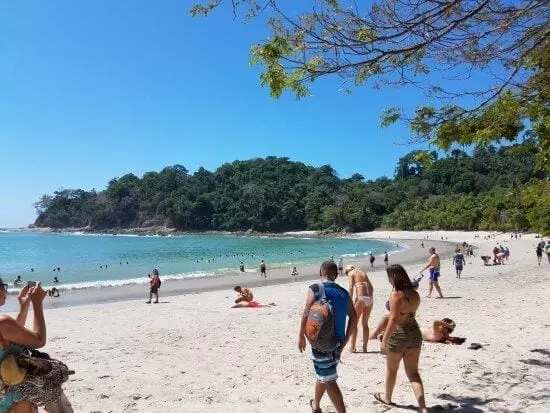
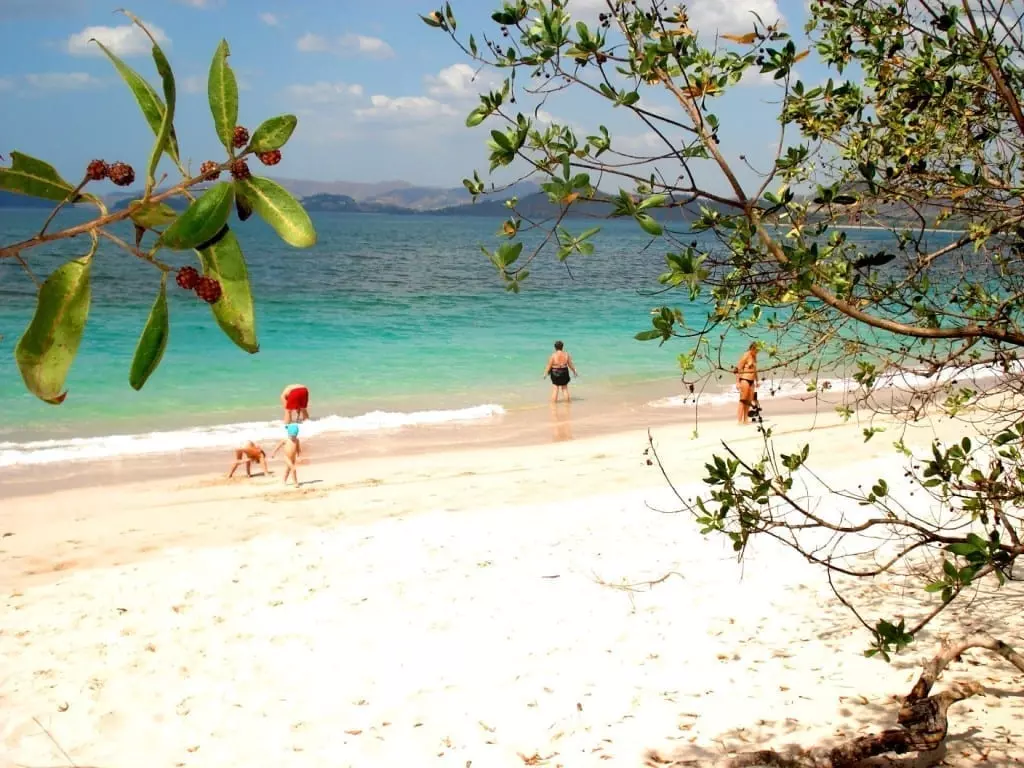
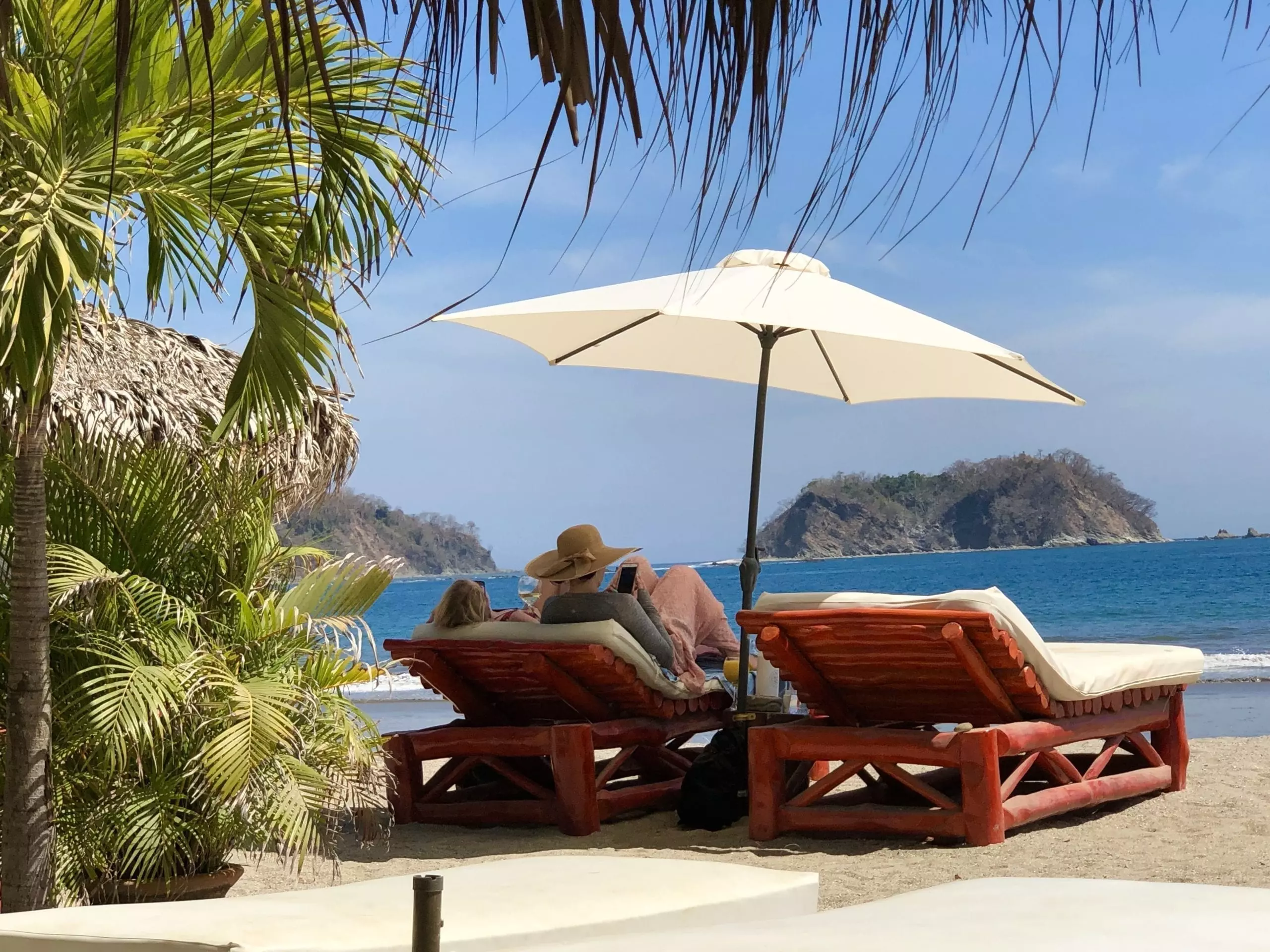
Why Costa Rica is a great place for wildlife
Costa Rica is widely regarded as a great place for wildlife, attracting nature enthusiasts from around the world. The country’s remarkable biodiversity and commitment to conservation make it a haven for a wide range of animals. From lush rainforests to pristine coastlines, Costa Rica’s diverse ecosystems provide abundant habitats for wildlife to thrive.
One of the main reasons why Costa Rica stands out as a wildlife hotspot is its astonishing variety of animal species. The country is home to over 500,000 different species, which represents nearly 4% of the world’s total biodiversity. From the iconic sloths and vibrant toucans to the elusive jaguars and charming white-faced capuchin monkeys, Costa Rica offers a captivating array of wildlife to discover and appreciate.
Costa Rica’s extensive network of protected areas, including national parks, wildlife refuges, and biological reserves, further enhances its status as a great place for wildlife. Approximately 25% of the country’s land is safeguarded, providing crucial habitats and ecosystems for animals to flourish. These protected areas not only ensure the preservation of wildlife but also offer visitors exceptional opportunities to observe animals in their natural habitats. Whether hiking through dense rainforests, exploring mangrove swamps, or snorkeling in vibrant coral reefs, Costa Rica’s protected areas offer unparalleled wildlife encounters.
Moreover, Costa Rica’s commitment to sustainable practices and eco-tourism sets it apart as a destination that prioritizes the well-being of its wildlife. The country has embraced sustainable tourism initiatives, promoting responsible wildlife viewing and minimizing the ecological impact of visitors. By supporting eco-friendly accommodations and tour operators, visitors can actively contribute to the conservation efforts and ensure the long-term preservation of Costa Rica’s diverse animal species.
The geographic location of Costa Rica also plays a crucial role in its richness of wildlife. Situated between North and South America, the country serves as a bridge connecting various ecosystems and facilitating the movement of animals across the region. This geographic advantage contributes to the incredible diversity of wildlife found in Costa Rica, making it a natural crossroads for migratory species. The country’s diverse habitats, including rainforests, cloud forests, and coastal areas, provide a wide range of niches and resources for animals to thrive.
How to Help Protect Wildlife in Costa Rica
Protecting wildlife in Costa Rica is a shared responsibility that requires collective efforts to ensure the preservation of the country’s rich biodiversity. Here are some effective ways to help protect wildlife and contribute to the conservation efforts in Costa Rica.
Support Conservation Organizations: There are numerous dedicated conservation organizations in Costa Rica working tirelessly to protect and preserve the country’s wildlife. Consider supporting these organizations through donations or volunteering your time and skills to assist in their conservation projects. By contributing to their work, you actively contribute to the well-being and preservation of Costa Rica’s diverse animal species.
Engage in Responsible Tourism: Choose tour operators and accommodations that prioritize sustainable practices and responsible wildlife viewing. Look for companies that adhere to ethical guidelines, minimize their environmental impact, and prioritize the welfare of animals. By practicing responsible tourism, you can enjoy wildlife encounters while ensuring the well-being of the animals and their habitats.
Minimize Plastic Use: Plastic pollution poses a significant threat to wildlife, particularly marine animals. Minimize your use of single-use plastics by carrying a reusable water bottle, using cloth bags for shopping, and avoiding products with excessive packaging. Properly dispose of any waste and participate in beach clean-ups or community initiatives focused on reducing plastic pollution.
Support Sustainable Agriculture: Choose locally sourced and organic products whenever possible to reduce the demand for practices that contribute to habitat destruction and the use of harmful pesticides. Support farmers who follow sustainable agricultural practices that minimize their impact on wildlife habitats and promote biodiversity conservation.
Educate Yourself and Others: Learn about the unique challenges faced by Costa Rica’s wildlife and share your knowledge with others. Stay informed about conservation issues, attend educational programs, and participate in initiatives that raise awareness about the importance of protecting and preserving wildlife. By educating others, you inspire a sense of responsibility and encourage collective action for wildlife conservation.
Be a Responsible Pet Owner: Domestic animals can have a significant impact on native wildlife if left uncontrolled. Ensure your pets are kept indoors or within designated areas to prevent them from hunting or disturbing local wildlife. Spay or neuter your pets to prevent their populations from negatively affecting native species.
Respect Wildlife and their Habitat: Maintain a respectful distance from wildlife and their habitats. Avoid feeding or touching animals, as this can disrupt their natural behavior and cause dependency on humans. Observe wildlife from a safe distance and adhere to any guidelines or regulations provided by park authorities to minimize disturbance and protect the well-being of the animal
By implementing these practices, we can all play a role in protecting the incredible wildlife of Costa Rica. Together, we can ensure that future generations have the opportunity to witness and cherish the diverse animal species that make Costa Rica a true wildlife haven.
FAQ: Costa Rica Wildlife
Costa Rica is home to a diverse range of wildlife, including monkeys, sloths, toucans, parrots, jaguars, turtles, and many species of reptiles and amphibians.
Some of the best places to see wildlife in Costa Rica are Manuel Antonio National Park, Tortuguero National Park, Monteverde Cloud Forest Reserve, and Corcovado National Park.
While Costa Rica is home to some venomous snakes and insects like scorpions, encounters with dangerous wildlife are rare if you follow basic safety precautions and respect their habitats.
Yes, Costa Rica’s coastal areas, particularly the Osa Peninsula and Marino Ballena National Park, offer opportunities to spot humpback whales, dolphins, and other marine mammals
Yes, Costa Rica is teeming with nocturnal animals. You might encounter species like bats, owls, kinkajous, and various night-active insects during guided night tours.
Yes, Costa Rica’s Pacific and Caribbean coasts are nesting grounds for several species of sea turtles, including the Olive Ridley, Green, and Leatherback turtles. Tortuguero National Park is famous for turtle nesting.
The nesting season for sea turtles in Costa Rica varies by species. Generally, the Olive Ridley turtles nest from July to December, while the Leatherback turtles nest from March to July.
Yes, you can go on wildlife safaris in Costa Rica. Many national parks and private reserves offer guided tours and safaris where you can observe a variety of wildlife in their natural habitats.
Costa Rica is a paradise for birdwatching enthusiasts. With over 900 bird species, you can spot vibrant toucans, resplendent quetzals, hummingbirds, and an array of colorful tropical birds
Yes, some popular birdwatching hotspots in Costa Rica include Monteverde Cloud Forest Reserve, La Selva Biological Station, Arenal Volcano National Park, and the Osa Peninsula.
Yes, you can see several monkey species in Costa Rica, such as howler monkeys, spider monkeys, capuchin monkeys, and squirrel monkeys. They are commonly found in rainforests and national parks.
Yes, there are several butterfly gardens in Costa Rica where you can observe a diverse array of butterfly species, learn about their life cycles, and enjoy the beauty of these colorful insects up close.
While jaguars exist in Costa Rica, they are elusive and rarely spotted. Corcovado National Park and the surrounding areas have the highest likelihood of a jaguar sighting, although it remains a rare occurrence.
Yes, there are opportunities to swim with dolphins in Costa Rica. Certain tour operators offer responsible dolphin encounters where you can swim alongside these magnificent creatures in their natural habitat
Yes, Costa Rica is home to a wide variety of bat species. You can observe bats in caves, rainforests, and cloud forests, or during guided night tours where their nocturnal activities are highlighted.
Yes, Costa Rica has populations of American crocodiles, and you can spot them in various areas such as the Tarcoles River, Palo Verde National Park, and Tortuguero National Park.
Yes, Costa Rica is home to some venomous snake species, including the Fer-de-Lance (Bothrops asper) and the Bushmaster (Lachesis muta). It’s important to exercise caution and avoid approaching snakes in the wild.
Yes, Costa Rica is famous for its sloth population. Both two-toed sloths and three-toed sloths can be found in the country’s forests, and you have a good chance of spotting them during nature walks or guided tours.
Yes, Costa Rica has numerous nature reserves that protect and showcase the country’s incredible biodiversity. Some well-known reserves include Monteverde Cloud Forest Reserve, Santa Elena Cloud Forest Reserve, and Carara National Park.
Yes, Costa Rica is home to the endangered Baird’s tapir. While sightings are rare, areas like Corcovado National Park and Tortuguero National Park offer a chance to spot these unique creatures.
Yes, Costa Rica is known for its colorful poison dart frogs. The best places to spot them are the Osa Peninsula, Tortuguero National Park, and various rainforest reserves.
Yes, several national parks in Costa Rica are renowned for their wildlife, including Manuel Antonio National Park, Corcovado National Park, Tortuguero National Park, and Arenal Volcano National Park
Absolutely! Costa Rica boasts stunning marine biodiversity, and snorkeling can offer encounters with colorful fish, coral reefs, rays, and even sea turtles in certain areas like the Cahuita National Park and Marino Ballena National Park.
Yes, Costa Rica is home to an incredible variety of frog species. From the vibrant Red-eyed Tree Frog to the iconic Glass Frog, you can spot these exotic amphibians in various rainforest regions.
Pumas, also known as cougars or mountain lions, do exist in Costa Rica, but they are elusive and rarely seen. Corcovado National Park and other remote forested areas offer a slim chance of spotting these elusive big cats.
Giant anteaters are not native to Costa Rica. They are more commonly found in South America, particularly in countries like Brazil and Argentina.
Yes, the resplendent quetzal is a prized bird species that can be seen in Costa Rica’s cloud forests, especially in Monteverde Cloud Forest Reserve and Savegre Valley.
